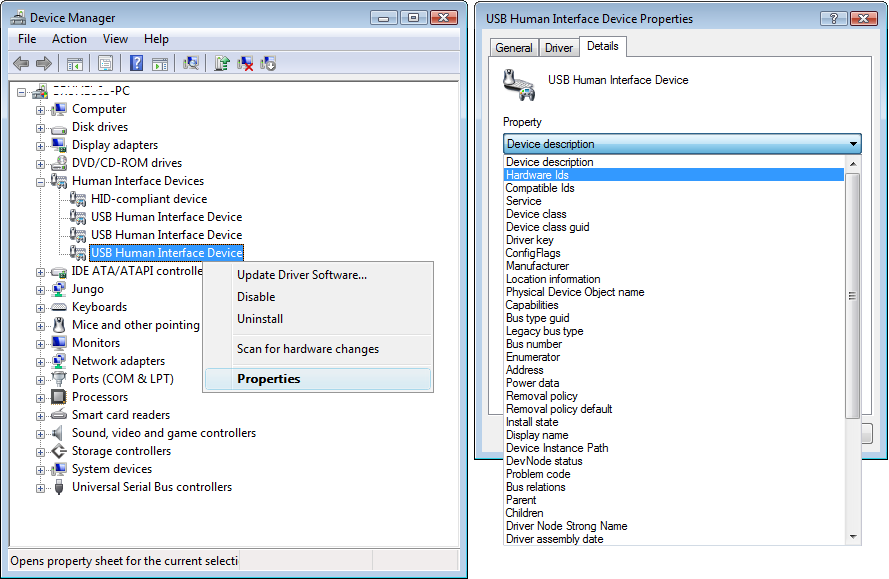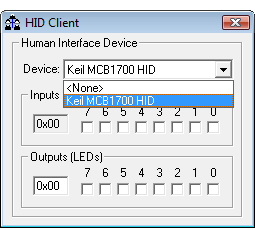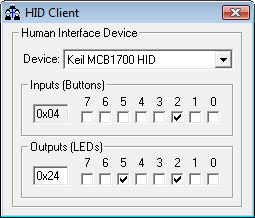|
||
| Products Download Events Support Videos | ||
Technical Support
On-Line Manuals
RL-ARM User's Guide (MDK v4)
Test HID Client Application
After the USB HID application has been downloaded to the device, test the application with the HIDClient.exe utility located in root\ARM\Utilities\HID_Client\Release.
- Verify the jumper settings of the board.
-
Connect the board to the PC using a USB cable.
(The Windows operating system installs the Human Interface driver automatically.)
-
Optionally, ensure that the device has been recognized. Launch
the Device Manager from the command line with
devmgmt.msc.
- Scan for new hardware if necessary.
- Use the Property - Details page to find the device identifiers.

- Launch root\ARM\Utilities\HID_Client\Release\HIDClient.exe.
-
Select the Device to establish the communication
channel.

-
Test the application.
- Move the joystick (on some boards press buttons) to enable the check-boxes Inputs (Buttons).
- Check the check-boxes Outputs (LEDs) to turn on the LEDs on the board.

ProductsDevelopment Tools |
Hardware & Collateral |
Downloads |
Support |
Contact |
